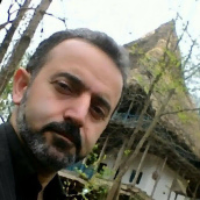Interpretation of the Architectural and Musical Elements in a Common Language
Author(s):
Abstract:
Every nation has its own ideals that objectifying them is by culture. In the process of this transformation, the architecture and music which come from the culture of each region have a fundamental role. Architecture and music have many similarities in conceptual directions, space, shape and morphology. They also have similarities in the basic and fundamental principles such as proportions, rhythm, harmony, repetition, aesthetics, etc. In such a period of time that the architecture has been turning to be meaningless and just a formal user of elements, music sounds with regard to their influence on human spirit, can be a proper parameter to benefit in architectural design particularly in conceptual schemes. The aim of this study is to interpret music and architectural elements with a common language and answering the question of whether the music sounds have the possibility to be converted into architectural forms. In order to answer, with interpretive-historical research methods and collecting data from library sources and interviews, firstly by analyzing the nature of architecture and music, their constitutive parameters have been identified and then have been studied comparatively and many common features were found in the basic principles such as spacing, extension, taking advantage of geometry and mathematics, as well as factors such as rhythm and texture morphology. After finding 23 features in music that could be interpreted as the common language of architecture, examples of architecture were recalled by the common language of music and finally it was concluded that music can be a role model in architectural design since in addition to the mentioned common properties, both by using numbers and quantitative proportions of their primary materials and voice, create a space which has a qualitative nature. Therefore the musical Dastgah Shur was designed on the identification of spacing and extension as the fundamental elements of music and using these formal elements.
Keywords:
music , architecture , spacing , extension , proportions , rhythm , texture
Language:
Persian
Published:
Journal of Motaleate-e Tatbighi-e Honar, Volume:6 Issue: 11, 2016
Pages:
99 to 113
https://magiran.com/p1595156
سامانه نویسندگان
مقالات دیگری از این نویسنده (گان)
-
An Approach to the Realization of Identity in Contemporary Architecture in Sari-2
Aarash Jahandari, *, Mehdi Hamzenezhad
Journal of Islamic Architecture Research, -
Exteracting The Pattern And Genome Of The Government Buildings of Iran At Islamic Era Case Study: Office Building at Tehran
Journal of Islamic Art and Culture,


